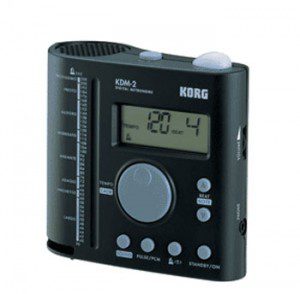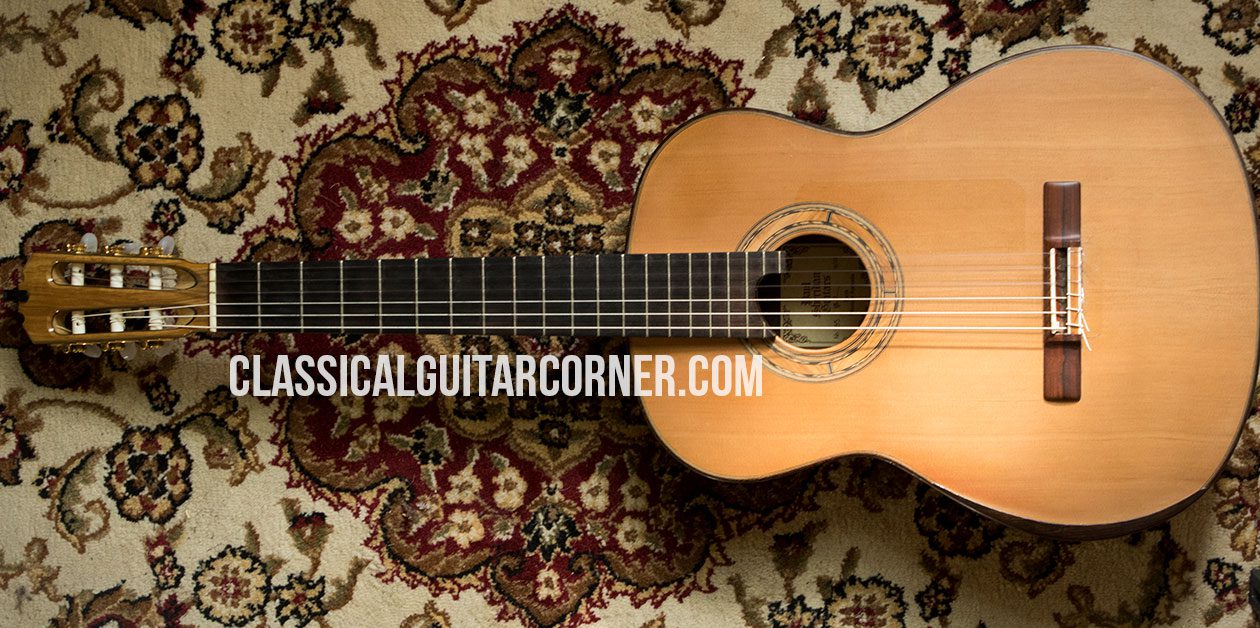Metronome Practice
In this article we’ll look at metronome practice. That is, we’ll walk through how to make the metronome your friend and get the most out of it in your practice.
 When I was in my teenage years I built up quite a large collection of metronomes. I was absolutely convinced that they kept breaking, one after another. I had tried new batteries, different settings, and even asked my friends if they could hear what I was hearing. To my, very self-assured ears, they were constantly slowing down and speeding up! It seemed inconceivable to me at the time that I was the one with the wandering tempo. Well, without making too much fun of myself let me just say that now, after almost ten years of conservatory training, all my nomes seem to work just fine…
When I was in my teenage years I built up quite a large collection of metronomes. I was absolutely convinced that they kept breaking, one after another. I had tried new batteries, different settings, and even asked my friends if they could hear what I was hearing. To my, very self-assured ears, they were constantly slowing down and speeding up! It seemed inconceivable to me at the time that I was the one with the wandering tempo. Well, without making too much fun of myself let me just say that now, after almost ten years of conservatory training, all my nomes seem to work just fine…
The nome is your friend!
(even if he seems like an enemy)
Using a metronome can be frustrating because if your rhythmic sense is not just right the metronome will let you know loud and clear. It is almost like having an annoying friend that is always right. However, if you persevere with the metronome it can bring wonderful results. The metronome can aid your practice by adding structure and it can help you diversify your practice schedule. The fact that it lets you know when your rhythm is straying is very useful if you make sure to correct yourself as you go along. The following list is some recommended ways to use your nome…
Speed development
Getting there one click at a time…
When speed is the element that makes a passage difficult remove the difficulty by reducing the speed. Bring down the tempo until it is manageable and you have full technical control over the entire passage. Don’t worry if you have to bring a 160 passage down to 80 or even lower. The most important thing is to be in control. Once you have found a tempo that you can play comfortably in then move the metronome up one notch. Keep at this process until you can play the passage at the right tempo making sure that you are fully in control at each tempo before moving on. This process not only improves your speed but it also develops good memory and strong technical control.
Parachute training…
Once you have reached the desired speed, keep going. If you are going to perform a passage at 160 in a concert then the very limit of your ability should be beyond that speed. It makes no sense to play a piece at your speed limit under stressful conditions when you strain to play the same tempo when relaxed and comfortable. Your goal should be to feel comfortable and in control when performing and practicing at a higher tempo than needed can help with this goal. If you can’t reach 160 and after devoted practice you can only play at 144 then your solution is clear: perform at 120 (these numbers aren’t exact, but serve to convey my point). Speed is something many guitarists are concerned with but it can take years to develop so have patience and don’t strain your body.
Rhythmic Stability
Subdivision
Subdivision is the process of dividing up a beat into smaller rhythmic units. For instance you could subdivide a crotchet/quarter note beat into two quavers/eighth notes or four semiquavers/sixteenth notes. If you are wondering what level of subdivision is best to use you can often use the smallest rhythmic value as your starting point. So, if the shortest duration in a passage is a sixteenth, set your metronome so that one beat of the metronome represents a sixteenth. By doing this you can hear exactly where each note lies. This can help greatly with dotted rhythms and syncopations. Many good musicians subdivide all the time whilst reading music, it can serve as a rhythmic support structure for sight reading and learning new music.
Larger units
By doing the opposite and having the metronome beat once every measure, or even two measures, you can feel larger groupings of notes and you can also put your rhythmic stability to the test. If you rush a few notes out of several then the metronome will not line up with you on the down beat. (but don’t throw your nome out the window, he’s just trying to help)
Structuring your practice time
A metronome can help you structure your practice by setting small goals with it. For instance you could play through an entire piece at a slow tempo with a metronome, or repeat scales and exercises at certain tempi. The fact that the metronome keeps going tends to keep you on track in your practice session and it can almost be like having a little coach by your side.
Pairing up a metronome with a timer (watch, clock, stopwatch etc. ) can be a formidable duo. You could for instance do slur exercises for five minutes at MM 80 then scales for ten minutes at MM 100 and then for twenty minutes work on repertoire at slow tempi. Try to find a timer that beeps at the set time intervals as its easy to get carried away with your practice time. A neat metronome that has an in built timer with beeps is the Planet Waves Full-Function Tuner and Metronome
Korg KDM-2 Digital Metronome
In my opinion the Korg KDM-2 metronome is head and shoulders above the rest out there. I have written a small review of it below.
Korg KDM-2 True Tone Advanced Digital Metronome
This metronome has it all. Clave rhythms, subdivisions, beat divisions, with an easy interface to change tempo, headphone jack, led light and a A440 tuning pitch. However, there are three very important factors that set this metronome high above all others. 1) Its LOUD (with adjustable volume) you will be able to hear the beat loud and clear through all of your loudest passages. 2)Its sounds great. Personally, I don’t like a lot of the electronic beeps that many metronomes use, over time it just drives me crazy. The KDM-2 has a selection of sounds which includes the very pleasing wood block sound that is strong yet inoffensive to the ear. 3)This metronome is virtually indestructible. I cannot count how many times this metronome has fallen off my music stand and onto the hard wooden floor. It has yet to falter, no matter how much I abuse it. It is not the cheapest metronome around, but its the best.


I don’t know if this is the right spot for this or not but I am looking for advice on playing the classical guitar. Where do I start. I am 30 and have had several different guitars and played off and on since I was 18 but never really accomplished anything. What I have learned is what I have learned on my own through books or bits here and there from people I have seen play. I have bad learning habits. I have never taken any lessons. I jump around a lot and dont think I know any full songs. I have been into every style of music at one time or another and as far as playing it on the guitar I have always loved finger-style the best. I like using all my fingers. And I have always liked classical music. So I have decided to focus strictly on playing classical. In the next month I am going out to buy a new guitar. I think maybe around the $1000 price range. Any advice on a good classical guitar for around that or a little more. Any advice at all would be so very helpful. Like I said I have had bad habits in the past trying to learn the guitar and I want to do this the right way from the start with classical. If I put this in the wrong spot I am sorry for wasting your time. And if you could point me in a direction then thank you very much.
[…] I say, “metronome clicks” it doesn’t actually have to be the metronome, you can count in your head or out loud, but you do have to be thinking of the smaller durations as […]
[…] think its great to practice vibrato with a metronome. You can start by bending the pitch up and down on each quarter (crotchet) beat, then one for the […]
Hello how are u great I hope Q is this a very good and loud Metronome cuz I hear and Im told it’s very good just have not had the extra $$ for things of course I know the mandatory practice with a Met…. is critical how much is this cuz I saw a similar M.. and it was $49.99
Korg also makes the KDM-3 which has all of the features of the KDM-2, but with more reference tones. Plus, optional word gain finishes. The only negative is it needs batteries, I wish it was rechargeable.
[…] Your practice routine should be devised around the requirements of the technique. To begin with, practicing with a metronome is a great way to ensure you are maintaining a consistent rhythm while also assisting in speeding […]